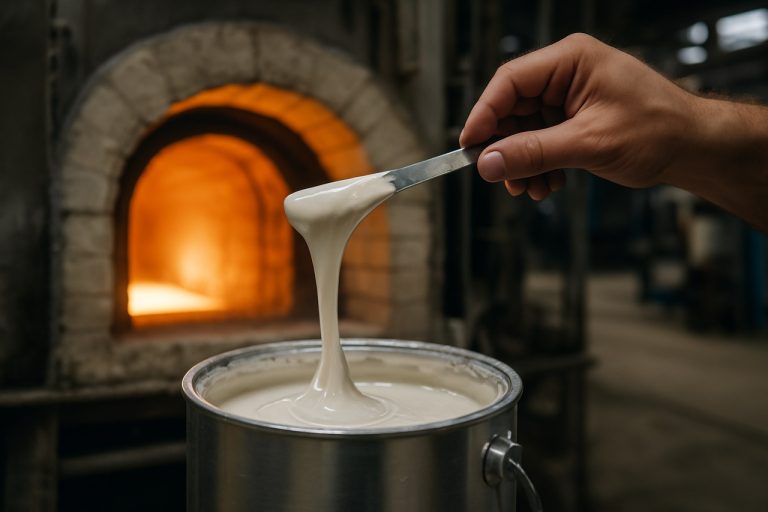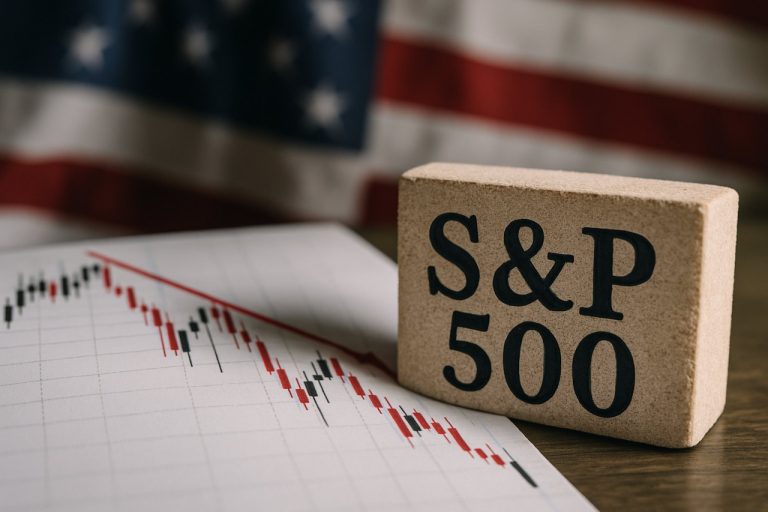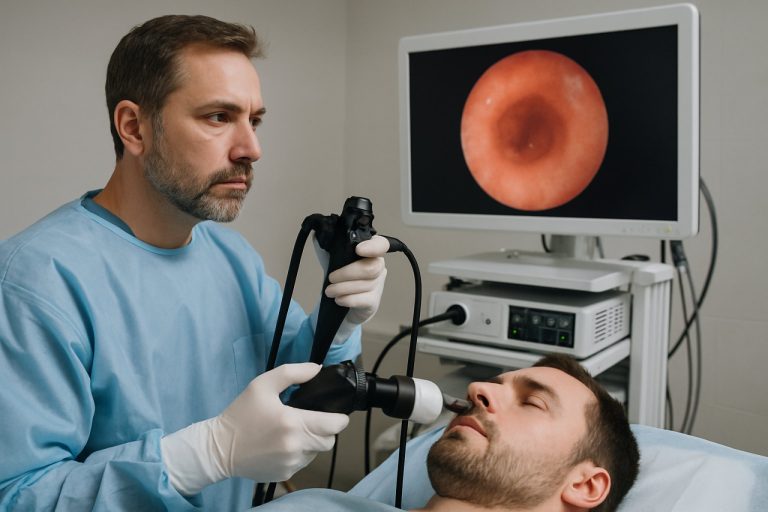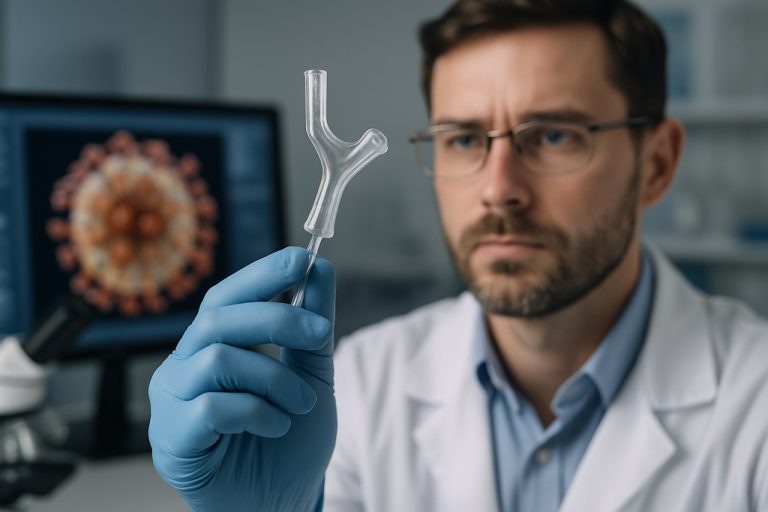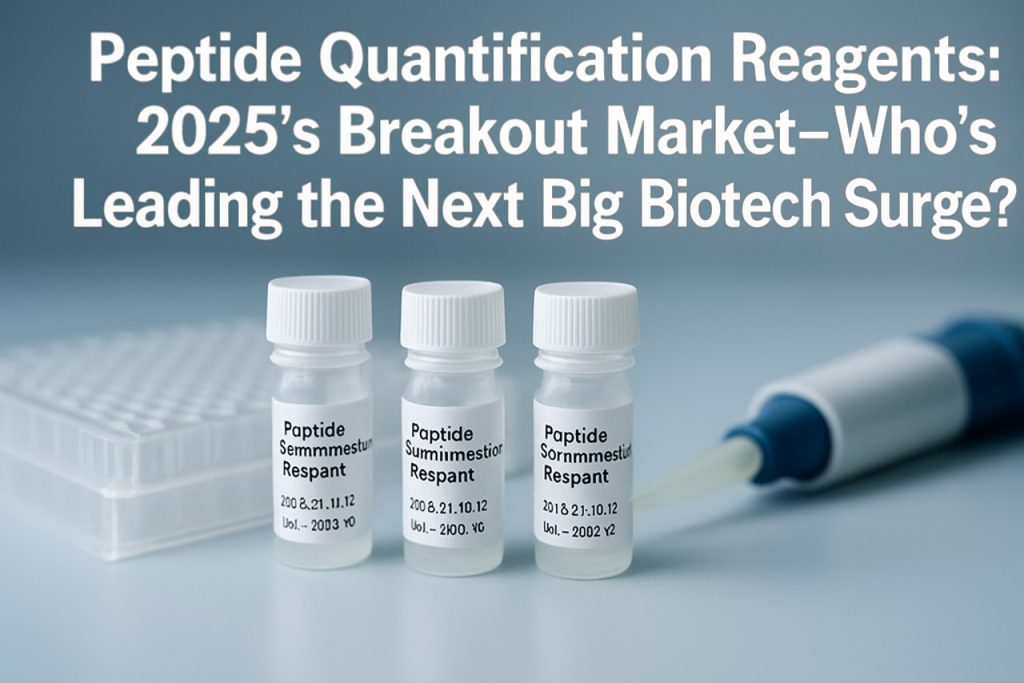
Table of Contents
- Executive Summary: 2025 Snapshot & Strategic Insights
- Market Size, Growth Forecasts & Key Segments (2025–2030)
- Regulatory Landscape and Industry Standards (e.g., fda.gov, ema.europa.eu)
- Technological Innovations in Peptide Quantification Reagents
- Leading Manufacturers & Competitive Benchmarking (e.g., sigma.com, thermo.com, waters.com)
- End-User Perspectives: Pharma, Biotech, and Diagnostics Demand
- Supply Chain Dynamics and Raw Material Trends
- Sustainability & Green Chemistry in Reagent Manufacturing
- Regional Analysis: North America, Europe, Asia-Pacific & Emerging Markets
- Future Outlook: Investment Opportunities & Disruptive Trends Ahead
- Sources & References
Executive Summary: 2025 Snapshot & Strategic Insights
The landscape of peptide quantification reagents manufacturing in 2025 is characterized by robust growth, innovation in chemistries, and a heightened focus on reproducibility and scalability. The increasing significance of peptide-based therapeutics, diagnostics, and proteomics research is driving demand for precise and reliable quantification solutions. Key industry leaders such as Thermo Fisher Scientific, MilliporeSigma (a part of Merck KGaA), and Promega Corporation continue to expand their portfolios with advanced reagent kits tailored for mass spectrometry, HPLC, and colorimetric/fluorometric assays.
Manufacturers are prioritizing the development of quantification reagents with enhanced specificity and minimal background interference, meeting the stringent requirements of clinical and biopharmaceutical laboratories. There is a marked shift toward ready-to-use, automation-compatible formats to accommodate high-throughput workflows and reduce user variability. For instance, Thermo Fisher Scientific and Promega Corporation have introduced new kits in the past year that are compatible with robotic liquid handlers, streamlining quantitation in regulated environments.
Sustainability and supply chain resilience are emerging as strategic priorities. Producers are investing in greener synthesis methods, minimizing hazardous solvents and reducing waste. Companies like MilliporeSigma are publicizing efforts to implement sustainable chemistry and secure multi-sourcing of key raw materials to ensure uninterrupted supply and mitigate geopolitical risks.
Looking to the next few years, peptide quantification reagent manufacturing is expected to see further integration with digital platforms, including cloud-based data analysis and assay tracking. The sector is also likely to experience increased collaboration between reagent producers and analytical instrument manufacturers, fostering seamless solutions for end-users. As the regulatory landscape for peptide drugs and diagnostics evolves, manufacturers are enhancing product traceability and documentation to meet compliance standards.
Overall, the 2025 outlook for peptide quantification reagents manufacturing is one of dynamic growth, technological adaptation, and strategic alignment with the expanding peptide applications market. Companies that prioritize innovation, automation, and supply chain robustness are well positioned to capture emerging opportunities in this evolving sector.
Market Size, Growth Forecasts & Key Segments (2025–2030)
The global market for peptide quantification reagents is poised for robust growth from 2025 through 2030, driven by expanding applications in proteomics, pharmaceutical development, and biotechnology research. As life sciences research continues to shift towards precision and high-throughput workflows, demand for accurate and efficient peptide quantification tools is expected to rise significantly.
Key market segments encompass colorimetric and fluorometric peptide assay kits, amino acid analysis reagents, and mass spectrometry calibration reagents. Among these, colorimetric and fluorometric kits—such as the BCA, Bradford, and Lowry-based systems—remain foundational due to their ease of use and compatibility with automated platforms. Major suppliers in this space, including Thermo Fisher Scientific and MilliporeSigma, continue to invest in reagent innovation, focusing on enhanced sensitivity and minimized interference from contaminants.
From 2025 onwards, growth will also be fueled by increasing adoption of mass spectrometry-based quantification, which requires specialized calibration and labeling reagents. Manufacturers such as Waters Corporation and Agilent Technologies provide a range of peptide standards and isotope-labeled reagents tailored for quantitative proteomic workflows, reflecting the sector’s move towards more precise and multiplexed analyses.
Geographically, North America and Europe are expected to maintain leading market shares, supported by the presence of established biopharmaceutical industries and active research environments. However, Asia-Pacific is projected to show the fastest growth, driven by expanding biotechnology hubs and increased R&D investments, particularly in China, South Korea, and Singapore. Companies like GenScript are expanding their manufacturing capabilities and distribution networks to meet rising regional demand.
Looking ahead to 2030, the peptide quantification reagent market is anticipated to benefit from ongoing developments in automation, miniaturization, and green chemistry. Major manufacturers are expected to emphasize reagent stability, shelf-life extension, and user-friendly packaging to support high-throughput laboratories. Furthermore, collaborations between reagent producers and instrument manufacturers will likely intensify, with co-developed products offering seamless integration and improved workflow efficiency. As these innovations mature, the market is positioned for sustained expansion, underpinned by the critical role of peptide analysis in drug discovery, clinical diagnostics, and biomarker validation.
Regulatory Landscape and Industry Standards (e.g., fda.gov, ema.europa.eu)
The regulatory landscape for peptide quantification reagents manufacturing is experiencing significant evolution as demand for high-precision analytical tools in pharmaceuticals, diagnostics, and biologics continues to grow in 2025. Regulatory agencies such as the U.S. Food and Drug Administration (FDA) and the European Medicines Agency (EMA) have been proactive in updating guidelines that impact the production, validation, and quality control of peptide quantification reagents, particularly those used in regulated environments.
The FDA’s guidance on analytical procedures and validation, including the draft “Analytical Procedures and Methods Validation for Drugs and Biologics,” emphasizes accuracy, precision, specificity, and robustness in the manufacture of peptide quantification reagents. These guidelines require manufacturers to demonstrate that reagents meet stringent criteria for identity, purity, and performance consistency, especially when used in Good Manufacturing Practice (GMP) or clinical settings (U.S. Food and Drug Administration).
In Europe, the EMA’s reflection paper on the use of risk-based approaches for the validation of analytical methods, including those for peptides, has further clarified expectations for manufacturers. The EMA expects rigorous documentation of reagent synthesis, batch traceability, and comprehensive stability studies. This aligns with the International Council for Harmonisation (ICH) Q2(R2) guidelines, which are increasingly adopted as harmonized standards across major markets (European Medicines Agency).
Leading manufacturers such as MilliporeSigma (a division of Merck KGaA, Darmstadt, Germany) and Thermo Fisher Scientific have responded by investing in automated synthesis and rigorous quality assurance protocols. These companies routinely publish technical documentation demonstrating compliance with regulatory standards and GMP requirements, ensuring their peptide quantification reagents are suitable for regulated laboratory and manufacturing environments (MilliporeSigma, Thermo Fisher Scientific).
Looking ahead, regulatory scrutiny is expected to intensify as the integration of peptide reagents into clinical diagnostics and personalized medicine accelerates. Ongoing dialogue between industry and regulators is likely to yield further refinements in standard-setting, especially regarding data integrity, traceability, and harmonization of global quality benchmarks. Manufacturers who proactively align with evolving guidelines will be best positioned to support next-generation biopharmaceutical development and emerging clinical applications.
Technological Innovations in Peptide Quantification Reagents
The manufacturing landscape for peptide quantification reagents is undergoing significant technological transformation in 2025, driven by the increasing complexity of peptide-based therapeutics and the growing demand for high-throughput, precise analytical tools. Recent advances are centered around automation, miniaturization, and the integration of digital platforms into traditional production workflows. These improvements are aimed at enhancing specificity, sensitivity, and reproducibility during the quantification process.
A major innovation is the application of advanced liquid chromatography-mass spectrometry (LC-MS) compatible reagents. Manufacturers such as MilliporeSigma have introduced next-generation stable isotope-labeled peptides and quantitation kits that streamline the preparation process, reduce sample variability, and allow multiplexed detection with greater accuracy. These innovations have become increasingly important as pharmaceutical and biotechnology companies require robust tools for both research and regulatory submissions.
Automation of reagent preparation and dispensing has also seen rapid adoption. Companies like Thermo Fisher Scientific are leveraging robotic liquid handlers and integrated workflow solutions, which minimize human error and support scaling for both R&D and quality control environments. Such automation not only reduces turnaround times but also supports the manufacture of customizable reagent sets tailored to specific peptides or experimental protocols.
Quality assurance and batch-to-batch consistency remain critical, especially as the industry shifts towards larger-scale production for clinical and commercial applications. Zeptosens (a brand of Bayer) has advanced in providing peptide quantification platforms that use calibrated, high-purity reagents, ensuring reliable quantitation across diverse biological matrices.
Looking forward into the next few years, manufacturers are expected to intensify their focus on green chemistry principles in reagent synthesis—reducing the use of hazardous solvents and adopting recyclable packaging as part of broader sustainability commitments. Furthermore, the integration of artificial intelligence and machine learning for process analytics and quality control is anticipated to further refine manufacturing tolerances and predictive maintenance of production lines.
In summary, the peptide quantification reagent manufacturing sector in 2025 is characterized by automation, digital integration, and enhanced quality control, with a clear trajectory towards sustainability and smart manufacturing. These innovations are poised to meet the rising demands of personalized medicine and advanced peptide therapeutics development.
Leading Manufacturers & Competitive Benchmarking (e.g., sigma.com, thermo.com, waters.com)
The peptide quantification reagents market in 2025 is shaped by advanced manufacturing capabilities and robust competition among a handful of globally recognized companies. These firms drive innovation and set quality benchmarks through proprietary reagents, specialized kits, and integrated analytical platforms. Leading manufacturers such as Sigma-Aldrich (Merck KGaA), Thermo Fisher Scientific, and Waters Corporation have established themselves as top-tier suppliers, offering portfolios that cater to both research and regulated environments.
- Sigma-Aldrich (Merck KGaA) continues to expand its peptide quantification product lines, offering well-characterized colorimetric and fluorometric kits. Their focus on lot-to-lot consistency and compliance with international standards positions them strongly in both pharmaceutical and academic sectors. In 2025, Sigma-Aldrich’s emphasis is on reagents optimized for high-throughput automation and compatibility with state-of-the-art LC-MS systems (Sigma-Aldrich (Merck KGaA)).
- Thermo Fisher Scientific leverages its broad life sciences footprint to deliver peptide quantification reagents alongside automated sample preparation solutions. Their Pierce™ range remains a dominant choice for BCA and Bradford-based peptide assays, while integration with their mass spectrometry instruments enables streamlined workflows for both qualitative and quantitative proteomics. Thermo Fisher has recently introduced next-generation quantification kits designed for enhanced sensitivity and reduced interference, reflecting ongoing R&D investment (Thermo Fisher Scientific).
- Waters Corporation distinguishes itself through ultra-sensitive quantification reagents tailored for use with its own UPLC and mass spectrometry platforms. In 2025, Waters emphasizes reagents developed for regulatory-compliant environments, targeting biopharma quality assurance and large-scale peptide drug manufacturing. Their AccQ•Tag and related solutions are widely adopted for precise amino acid and peptide analysis (Waters Corporation).
Competitive benchmarking in 2025 highlights a trend toward reagent kits that minimize user error, reduce sample input requirements, and provide reproducible results across platforms. Manufacturers are increasingly collaborating with instrument providers to ensure seamless integration and data compatibility, while also addressing stringent regulatory requirements for clinical and therapeutic peptide workflows. Over the next few years, the landscape is expected to see further innovation in multiplexed assays and sustainable reagent chemistries, positioning these leaders at the forefront of peptide quantification reagent manufacturing.
End-User Perspectives: Pharma, Biotech, and Diagnostics Demand
The demand for peptide quantification reagents is witnessing robust growth in 2025, primarily driven by end-users in the pharmaceutical, biotechnology, and diagnostics sectors. These industries are increasingly reliant on precise peptide quantification for applications such as drug development, biomarker discovery, and clinical diagnostics. The expanding pipeline of peptide therapeutics, as well as the integration of mass spectrometry-based workflows, is fueling the need for high-quality, reliable reagents that enable accurate quantitation.
Pharmaceutical manufacturers are intensifying their focus on peptide-based drugs for oncology, metabolic, and rare diseases. This trend is mirrored in the growing adoption of advanced quantification kits and reagents to ensure the quality, purity, and efficacy of peptide therapeutics. For instance, Thermo Fisher Scientific is actively partnering with biopharma companies to deliver specialized reagents tailored for large-scale peptide analysis, supporting both preclinical and clinical stages. Similarly, Merck KGaA (MilliporeSigma) continues to expand its suite of quantification reagents and custom synthesis services to accommodate complex peptide workflows.
In the biotechnology sector, the emphasis on proteomics and personalized medicine is pushing demand for sensitive, high-throughput quantification solutions. Biotech firms are utilizing multiplexed assays and isotopically labeled peptide standards to enable accurate measurement of target peptides in complex biological matrices. Promega Corporation has reported increased uptake of its peptide quantification reagents among biotech laboratories engaged in biomarker validation and drug target verification. Such reagents often feature improved lot-to-lot consistency and compatibility with automated liquid handling systems, which is vital for scalability.
Diagnostics companies are leveraging peptide quantification reagents to enhance assay sensitivity and specificity in clinical applications, including early disease detection and therapeutic monitoring. The continued development of LC-MS/MS-based diagnostic panels is creating new opportunities for reagent manufacturers to supply custom and ready-to-use kits. Waters Corporation, for example, is working closely with diagnostic developers to co-design reagents optimized for clinical mass spectrometry platforms, anticipating further growth in the segment through 2026 and beyond.
Looking ahead, the outlook for peptide quantification reagents manufacturing remains positive, with end-users seeking reagents that offer enhanced sensitivity, regulatory compliance, and streamlined integration into automated workflows. Manufacturers are expected to invest further in quality control, supply chain resilience, and collaborative product development with leading pharma, biotech, and diagnostics organizations to meet evolving demand.
Supply Chain Dynamics and Raw Material Trends
The supply chain for peptide quantification reagents is experiencing notable shifts in 2025, characterized by evolving raw material sourcing strategies, increased scrutiny of manufacturing standards, and regional diversification. As peptide reagents are fundamental for pharmaceutical quality control, drug development, and proteomics research, their manufacturing supply chain is tightly linked to both peptide synthesis and high-purity chemical industries.
One of the major trends in 2025 is the strategic localization of raw material production. Leading suppliers such as MilliporeSigma and Thermo Fisher Scientific have expanded local manufacturing capabilities in North America and Europe to reduce dependence on Asian raw material markets. This move is partly a response to pandemic-era logistical disruptions and ongoing geopolitical uncertainties, which have highlighted vulnerabilities in global supply chains.
Raw material trends are shifting toward higher quality and traceability standards. The demand for cGMP-grade amino acids, protected intermediates, and chromatography resins has risen, with suppliers like Bachem and Polypeptide Group reporting investments in upgrading their purification and quality control infrastructure to comply with more stringent regulatory requirements from agencies such as the FDA and EMA. This is crucial as end-users, particularly in clinical and pharmaceutical settings, require reagents with well-documented provenance and minimal batch-to-batch variability.
Sustainability is also influencing raw material sourcing decisions. Companies such as LGC are incorporating green chemistry principles by shifting to more sustainable solvents and reducing hazardous waste in peptide reagent production. These efforts are expected to continue in coming years, driven both by regulatory pressures and customer preferences.
Looking forward, the peptide quantification reagent market is poised for further supply chain resilience and transparency. Digital supply chain tracking and blockchain-based provenance systems are being trialed by suppliers like Thermo Fisher Scientific to provide real-time visibility into the movement and quality of raw materials. This is anticipated to become more widespread by 2026–2027, enhancing trust and compliance throughout the manufacturing lifecycle.
In summary, the supply chain dynamics for peptide quantification reagents in 2025 are defined by regional diversification, higher quality and traceability of raw materials, and a shift toward sustainable and transparent manufacturing practices, with these trends expected to intensify in the near future.
Sustainability & Green Chemistry in Reagent Manufacturing
Sustainability and green chemistry principles are increasingly shaping the manufacturing practices of peptide quantification reagents in 2025. The industry, responding to both regulatory pressure and market demand, is focusing on reducing environmental impact throughout the lifecycle of these critical analytical reagents. Key manufacturers are investing in greener synthetic routes, waste minimization, and the adoption of renewable raw materials.
One significant trend is the shift away from hazardous organic solvents traditionally used in peptide synthesis and derivatization for quantification. For example, MilliporeSigma (the U.S. and Canadian arm of Merck KGaA) highlights its ongoing efforts to provide “Greener Alternatives” in its product portfolio, including reagents for peptide analysis that utilize less toxic solvents and more sustainable packaging. The company’s commitment is reflected in its “DOZN” green chemistry scoring system, which evaluates products based on the 12 Principles of Green Chemistry.
Similarly, Thermo Fisher Scientific has announced initiatives to reduce the carbon footprint of its reagent manufacturing. This includes energy-efficient production facilities and the use of bio-based precursors for certain quantification reagents. The company reports on its progress via annual sustainability reports and has set targets for waste reduction and water usage in reagent production.
On the process side, manufacturers are adopting continuous flow chemistry and process intensification to minimize reagent waste and improve atom economy. Cytiva (formerly part of GE Healthcare Life Sciences) has publicized its adoption of modular manufacturing systems, which allow for greater flexibility and efficiency in peptide reagent production, reducing both resource consumption and emissions.
Industry-wide, there is also a move towards recyclable and biodegradable packaging for peptide quantification kits, as well as take-back programs for used reagent containers. Organizations such as MilliporeSigma have piloted programs for recycling chemical containers, aiming to divert laboratory plastic from landfills.
Looking ahead, the outlook for 2025 and beyond includes further innovation in enzymatic and greener chemical derivatization methods, with manufacturers collaborating with academic and industrial partners to develop next-generation reagents that meet both analytical performance and environmental stewardship criteria. As regulatory frameworks continue to evolve, companies in the peptide quantification reagent sector are expected to further embed sustainability into their manufacturing practices, making green chemistry a core pillar of future growth.
Regional Analysis: North America, Europe, Asia-Pacific & Emerging Markets
The manufacturing landscape for peptide quantification reagents is evolving rapidly across North America, Europe, Asia-Pacific, and emerging markets. The global growth is driven by expanding applications in biopharmaceutical research, clinical diagnostics, and personalized medicine, with significant regional nuances in capacity, innovation, and regulatory environments.
- North America: North America maintains a leading position in peptide quantification reagent manufacturing, underpinned by robust R&D infrastructure, mature biopharmaceutical industries, and supportive regulatory frameworks. Companies such as Thermo Fisher Scientific and MilliporeSigma (the U.S. and Canadian arm of Merck KGaA) continue to expand their product portfolios, offering advanced reagents for mass spectrometry and immunoassay-based quantification. The region benefits from a strong customer base in pharmaceutical, biotechnology, and academic sectors, with ongoing investments in manufacturing scale-up and automation anticipated through 2025 and beyond.
- Europe: Europe is characterized by a combination of established reagent manufacturers and innovative startups, particularly in Germany, the UK, and Switzerland. Merck KGaA and Thermo Fisher Scientific (with substantial European operations) play pivotal roles, supplying a wide array of peptide quantification kits and custom synthesis services. Regulatory harmonization under the European Medicines Agency (EMA) and increasing collaboration between academia and industry are accelerating the adoption of high-quality reagents. The region is also seeing investments in sustainable manufacturing practices and digitalization of production workflows.
- Asia-Pacific: The Asia-Pacific region is experiencing the fastest growth in peptide quantification reagent manufacturing, fueled by expanding pharmaceutical markets in China, India, Japan, and South Korea. Companies such as GenScript Biotech Corporation are scaling production capacity and broadening their reagent lines to serve both local and global customers. Government initiatives to bolster life sciences infrastructure, as seen in China’s biopharmaceutical policies, are attracting international collaborations and technology transfer. The increasing number of clinical trials and generics manufacturing is amplifying the need for reliable quantification reagents, with regional players investing in advanced analytical technologies.
- Emerging Markets: In Latin America, the Middle East, and Africa, peptide quantification reagent manufacturing is at a nascent but promising stage. Local firms are beginning to partner with global suppliers to localize reagent formulation and distribution, responding to rising healthcare investments and regional research initiatives. While manufacturing scale is smaller compared to established markets, capacity building and technology adoption are expected to accelerate through 2025, particularly as regulatory standards converge and local demand for peptide therapeutics grows.
Overall, the next few years will see increased cross-regional partnerships, technological upgrades, and value chain integration, with a focus on regulatory compliance and supply chain resilience. These dynamics will continue to shape the competitive landscape of peptide quantification reagent manufacturing worldwide.
Future Outlook: Investment Opportunities & Disruptive Trends Ahead
The peptide quantification reagents manufacturing sector is poised for significant developments in 2025 and the following years, driven by advances in analytical technologies, the expanding peptide therapeutics pipeline, and increased investment in precision medicine. The demand for high-sensitivity, robust, and reproducible quantification reagents is escalating as pharmaceutical and biotech companies accelerate peptide drug development and biomanufacturing processes.
A key trend shaping the future landscape is the integration of advanced mass spectrometry and multiplexed detection platforms, necessitating reagents with higher specificity and compatibility with automated workflows. Major industry players, such as Thermo Fisher Scientific and MilliporeSigma, are actively investing in R&D to deliver next-generation quantification kits, isotopically labeled standards, and high-throughput sample prep solutions tailored for regulatory-compliant environments. These innovations align with the pharmaceutical sector’s push for streamlined quality control and efficient lot-release testing in both clinical and manufacturing settings.
The manufacturing ecosystem is also witnessing an uptick in strategic collaborations. For example, Promega Corporation has expanded its partnerships with contract development and manufacturing organizations (CDMOs) to ensure scalable production and global distribution of quantification reagents. This collaborative approach helps address growing supply chain complexity and regional regulatory requirements, especially for GMP-grade reagents used in clinical applications.
Investment activity is expected to rise as peptide drugs gain traction across oncology, metabolic diseases, and rare disorders. Venture capital and corporate funding are increasingly targeting startups and established manufacturers with platforms for custom reagent design and rapid scale-up. The entry of new players, particularly those leveraging digital manufacturing and AI-driven optimization, is anticipated to disrupt traditional supply models and foster a more agile, customer-centric market.
Looking ahead, sustainability and regulatory compliance will be central to future investment decisions. Companies are adopting greener chemistries and digital tracking systems to meet evolving environmental and traceability standards. Organizations such as Lonza are already implementing eco-friendly manufacturing processes and transparent quality documentation, setting benchmarks for the industry.
In summary, from 2025 onwards, the peptide quantification reagents manufacturing sector is characterized by strong investment momentum, strategic partnerships, and disruptive technologies that promise greater efficiency, quality, and sustainability. Stakeholders who prioritize innovation and compliance are well-positioned to capture emerging opportunities in this dynamic market.
